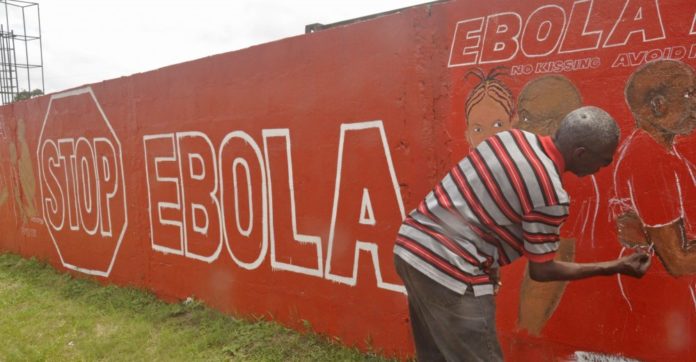
The Ebola outbreak has reached the last untouched corner of Sierra Leone, infecting two people as the World Health Organization (WHO) warned new cases “continue to explode”.
With 425 new cases recorded in just in the last week, Sierra Leone is one of three West African nations at the epicenter of the world’s worst outbreak of Ebola, which has killed close to 4,500 people since first appearing in the Guinean forest last December. As Ebola spread across the rest of Sierra Leone, locals in the far northern Koinadugu district had taken aggressive measures to keep the virus from crossing its borders.
Koinadugu–located on the border of Guinea, where the current Ebola outbreak began and first spilled over into Sierra Leone–is the largest of Sierra Leone’s 14 districts by area, with an estimated population of 260,000 people.
For the past several months, residents had practiced strict safety precautions and limited contact with the rest of the country where the disease is rampant. Surrounded by mountains, guards with thermometers and disinfectant had staffed checkpoints restricting movement in and out.
And until this week, the district had escaped the reach of the outbreak. But disease surveillance officers said on Thursday that two of six samples taken from the village of Fankoya, where suspicious deaths had been recorded, tested positive on Wednesday.
“Last week, the Koinadugu district’s health team received word of people dying in the village of Fakonya, some 60 miles over very rough terrain from the town of district center of Kabala,” ABC News reported today. “Some 15 people had died and then two of the six samples tested came back as positive for the virus — the deaths had originally been attributed to witchcraft.”

Koinadugu, located in the northern region of Sierra Leone, was the last unaffected district in the country until this week, when they reported their first two cases of Ebola.
The affected village has been isolated and nearby communities have been put under observation as local officials fear the prospect of many more cases in a country where at least 1,200 people have already died of the disease.
It is unclear how the virus finally reached Koinadugu, but Ebola is raging out of control in the rest of Sierra Leone, with some areas reporting up to five new infections every hour. In Guinea, Liberia, and Sierra Leone, “new cases continue to explode in areas that looked like they were coming under control,” the World Health Organization said this week.
As with earlier outbreaks elsewhere in Africa, containment and treatment measures are often hampered by tradition, superstition, and poor public health infrastructure. But this epidemic is especially pernicious for several reasons.
In the early stages of the epidemic, when it could have been more easily contained, few health professionals in the region even knew it was taking place. Though outbreaks are common in central Africa, the disease had almost never been seen before in western Africa. And many of the first patients did not have symptoms consistent with a hemorrhagic fever, which initially obscured its identification. The public health response was therefore slow, and officials who made statements were often trying to calm people’s fears, giving inaccurate and sometimes contradictory information.

When Ebola first appeared in West Africa, a region that had never before seen an outbreak of the disease, health officials did not recognize the virus as Ebola. This allowed the outbreak to spread from its initial emergence in Guinea over the porous borders into Sierra Leone and Liberia, with isolated cases spreading to Nigeria and Senegal.
Even after Ebola was identified as the source, health officials in the affected countries faced overwhelming challenges in their response. Unusual in Ebola outbreaks, the disease is spreading to urban areas, making it even more difficult to control. At this point, the demand for treatment beds and nurses to halt the rapid spread of Ebola is far outstripping supply.
Dr. Amara Jambai, director of prevention and control at Sierra Leone’s health ministry, recently described these challenges, telling the The New York Times that his country is wholly unprepared to combat the spread of the deadly disease. Clinics are unable to deal with the constant influx of severely ill patients, Dr. Jambai said. The nearest Ebola treatment center is often hours away. Doctors and nurses lack basic training on how to prevent infections, he said, and patients receive a minimum level of aid. Little international help has reached the region.
Currently, experts say the epidemic is doubling in size about every three weeks in what the WHO calls “the most severe acute public health emergency in modern times.” In a situation assessment released this week, WHO epidemiologists said that there are “no signs that the outbreaks in any of these three countries are coming under control.”
According to estimates by the U.S. Centers for Disease Control, the number of Ebola cases in Liberia and Sierra Leone could rise to 1.4 million by January if the disease is not effectively fought.
